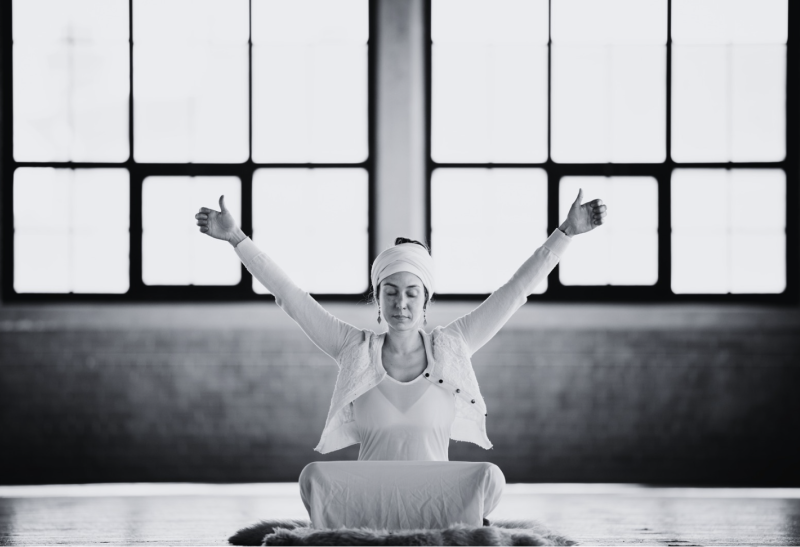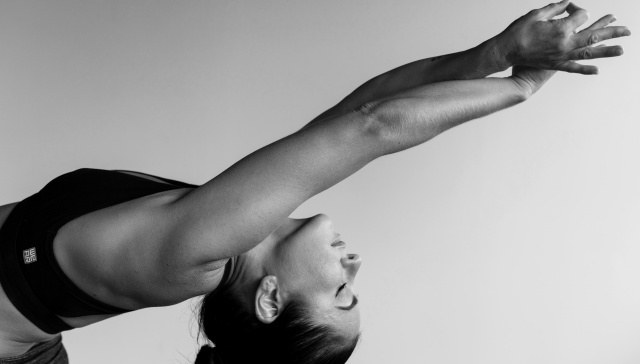Kundalini Yoga

The History of Kundalini Yoga
Kundalini derives from the Sanskrit word kundal, which means “coiled energy” or ‘coiled snake’. The practice is built on the belief that we possess a divine feminine energy at the base of the spine and through the practice, we bring that energy up our spines, through the seven chakras and out the crown of our heads. It’s a Kundalini awakening of our Higher Self, and a realisation of our potential energy.
Kundalini Yoga’s exact origin is unknown, however historical records place its inception around 1,000 BCE to 500 BCE where sacred writings of spiritual visions known as Upanishads were developed as physical expression.
For thousands of years Kundalini teachings were saved for the Indian yoga elite, kept hidden and passed on in secret when a master deemed a student ready.
It wasn’t until the twentieth century that Kundalini Yoga was shared with the Western world by Yogi Bhajan who moved from Punjab to Toronto in 1968.
The controversial Yogi Bhajan
Yogi Bhajan was raised in a wealthy real estate owner family, and spent his youth in private schools. As a young boy, he went to a Catholic school. He has a degree in Economics.
He began his yogic training when he was eight years old with, Sant Hazara Singh and became Master of Kundalini Yoga when he was sixteen and a half.
He worked as a customs agent at Dehli Airport before leaving for Canada.
Kundalini yoga is often associated with the Sikh tradition, and Yogi Bhajan was himself Sikh. His grandfather was a very religious Sikh and had a great influence on his grand child. But it doesn’t mean that all Sikh people practice Kundalini yoga, and most don't want anything to do with Yogi Bhajan.
When visiting California in the late 1960s from Canada, Yogi Bhajan awoke from meditation, inspired to bring Kundalini to the West. He believed that it was everyone’s birthright to be healthy, happy and holy, and that practising this form of yoga was a direct way to achieve this.
He made LA his home and founded the 3HO Foundation and Kundalini Research Institute where he taught classes to drug addicts and established a teacher training programme. The 3HO stands for Healthy, Happy, Holy Organization.
He also penned several books on the practice including ‘I Am a Woman: Creative, Sacred & Invincible’ and ‘The Aquarian Teacher’.
Yogi Bhajan was a businessman; he created several companies, including the famous brand “Yogi Tea” in 1984 and Akal Security, a judicial security contractor in the United States making billions on Federal contracts.
He died in his house in New Mexico at age 75 from heart failure in 2004. The highway along his house was renamed after him.
Like most of the 20th-century Gurus, Yogi Bhajan is now under a lot of criticism, including emotional and sexual abuse at scale.
What is Kundalini yoga
Kundalini yoga involves chanting, singing, breathing exercises, and repetitive poses to activate your shakti (spiritual energy located at the base of the spine) and work on the chakras.
Kundalini yoga mixes Bhakti yoga (devotion and chanting), Raja yoga (meditation and self-control), and Shakti yoga (a type of Vinyasa yoga that incorporates meditation and pranayama) in a combination of physical postures, breathwork and mantras, engaging your whole body and mind.
The objective of Kundalini yoga is to achieve Kundalini Awakening.
This can be done via krias (sets of postures and breathing), meditation (clean the mind), pranayama (slow the breathing), mudras (hand and fingers gesture), mantras (short chants), bandhas (body locks).
A Kundalini Yoga practice will focus on your energy and how it moves through your body.
Each series of postures,a Kriya, means “completed action. A Kria starts with a pose, breathwork and can end with a meditation.
Breathwork is very important in Kundalini yoga, Breath of Fire (Agni Pran) being one of the foundation breathing techniques.
Breath of Fire is usually practised through the nostrils with the mouth closed: an equal breath in and breath out in a rapid rhythm, 2 to 3 cycles per second, from the navel to the nose.
Other kundalini breathing exercises include long deep breathing, suspending the breath, right, left, and alternate nostril breathing, segmented breath, passive awareness breathing, one-minute breath.
Kundalini Yoga Classes
Kundalini Yoga classes usually start with an opening chant, a warm up for your spine, a series of Kriyas (sequence of postures with breathing techniques) and then a closing meditation or song. Most students will dress all in white which is thought to ward off negative energy and allow your aura to expand.
However, it’s OK to practice without the formal attire, especially livestream! Wear something that’s comfortable and that allows you to move.
The teacher will likely wear white, sometimes a head covering like a turban or headscarf to contain energy within the body.
A typical class will last between 60 and 90 minutes and is focused on your breath and the alignment of your chakras.
The sequences are repeated for a set length of time : 3 minutes (affects blood circulation), 7 minutes (effect to brain patterns), 11 minutes (glandular system), 22 minutes (anxiety), 31 minutes (mind and aura).
To get the maximum benefits, it is recommended to practice following a set length of time: 11 days in a row (1st step to break loose), 40 days (breaks negative habits), 90 days, 120 days (create new habits), 1000 days (master new habit).
The teacher often plays the gong bath at the end of the class during relaxation.
The 7 Kundalini chakras and their meaning:
You can work on your chakras and align them stretching your spine. The practice helps you focus on each of them, one by one:
- Root Chakra: Muladhara = I am
- Sacral Chakra: Swadhisthana = I feel
- Solar Plexus Chakra :Manipura = I do
- Heart Chakra: Anahata = I love
- Throat Chakra: Vishuddha = I speak
- Third Eye Chakra: Ajna = I see or I know
- Crown Chakra: Sahasrara = I understand
Kundalini mantras
Mantras are also used in Kundalini Yoga, the most popular being ‘Ong Namo Guru Dev Namo’, which translates to “I bow to the Creative Wisdom and to the teacher within.” and Sat Nam, which means, “I honour my true identity”.
The practice usually ends with the “the long time sunshine” song:
“May the long time sun shine upon you All love surround you
And the pure light within you Guide your way on.”
Who Can Practice Kundalini yoga?
Anyone can practice Kundalini Yoga, although if you have a pre-existing condition or injury it should be approached with care and you should notify the teacher.
Kundalini combines physical postures, breathwork and mantras, engaging your whole body and mind. Kundalini is perfect for you if you enjoy chanting mantras, and working on your breathing , while working out at a low to medium intensity level.
Kundalini Yoga is great for reducing stress, improving willpower and creativity, and quieting our busy minds.
Who can teach Kundalini yoga?
To teach Kundalini yoga, you must attend classes certified by the Kundalini Institute, the certifying body for Yogi Bhajan-certified Kundalini Yoga.
The Level One Teacher Training Program is a 220-hour professional certification program with 180 hours of classroom instruction and 40 hours of independent study: service projects and a 40-day meditation and more. Graduates fulfil the Yoga Alliance RYT (Registered Yoga Teacher) 200-hour requirement.
Generally, Kundalini Yoga Teacher Training Level One takes a minimum of a year to complete, with one weekend a month of practice/classroom tuition and homework
Our Kundalini Yoga teachers

 Live Yoga Teachers
Live Yoga Teachers
